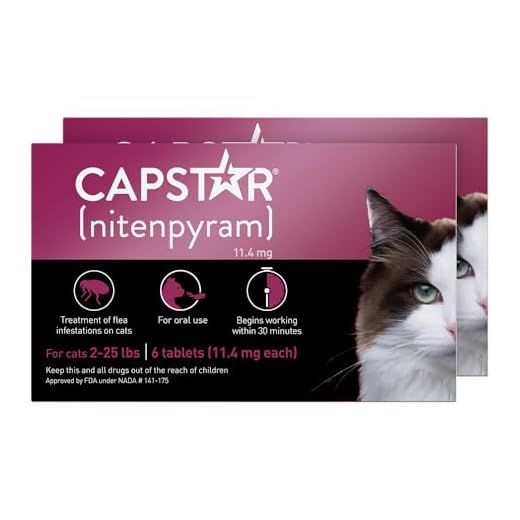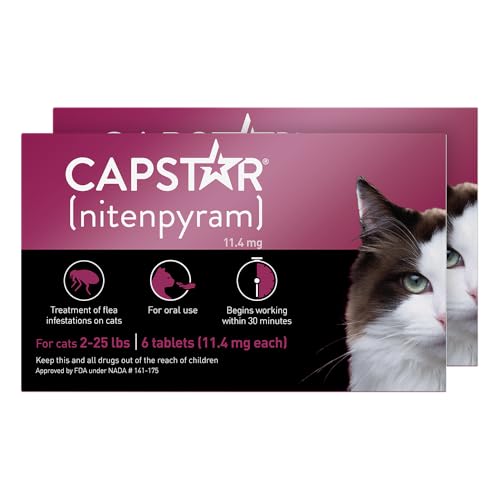



Crushing pills and mixing them with a favorite treat is one of the best strategies to ensure the medication is consumed without fuss. Peanut butter or soft cheese works wonders, making the whole process smoother for both of us.
For those who prefer a hands-on approach, wrapping the tablet in a small piece of meat or fish can also be effective. Just ensure it’s something your furry friend enjoys, as the goal is to mask any unpleasant taste.
Another technique involves using a specialized pill dispenser, which allows for a more direct method of administration. This tool can help avoid any struggles during the process, making it quicker and less stressful.
Creating a calm environment is crucial, as stress can hinder the experience. A quiet space, filled with familiar scents, can make all the difference. If necessary, having a second person to assist can also be beneficial, ensuring everything goes smoothly.
Always monitor for any side effects after the medication is taken. Observing changes in behavior or appetite is key to ensuring the well-being of your furry companion.
Tablet Administration Techniques
Crushing the pill into a powder and mixing it with a small amount of my favorite wet food works wonders. The key is to ensure the mixture is tasty enough to mask any unpleasant flavors. Just a teaspoon will do. Once served, I’ll gobble it up without a second thought.
Using a Pill Pocket
Those treats specifically designed for hiding medication are perfect! I simply pop the pill inside the pocket of the treat and seal it up. It’s like a delicious surprise! Make sure to choose a flavor that I really enjoy, as that increases the chances I’ll eat it right away.
Manual Administration
If all else fails, gently holding my head and opening my mouth with care can be effective. Place the pill at the back of my throat, then close my mouth. A little rub on my throat encourages me to swallow. Follow up with a tasty treat or some praise to make the experience more pleasant. Always stay calm; my mood can pick up on your energy!
Understanding Your Feline Friend’s Reaction to Medications
When it comes to medications, I’ve learned to be quite discerning. Many of my fellow furballs can exhibit a range of emotions, from curiosity to outright aversion. Recognizing these behaviors can make the process smoother. For instance, if I sense something unusual, I might hide or refuse to eat. It’s vital to observe my body language; if I’m stiff or my ears are back, I’m probably feeling uneasy.
Some of us are more food-oriented. Mixing a pill with a favorite treat can sometimes work wonders, but if we detect the foreign object, we might just pick it out and leave the rest. Experimenting with various textures or flavors can help in finding what appeals to us. A bit of warmth or strong aroma can often entice even the pickiest eaters.
Additionally, the environment plays a role. A calm setting, free from distractions, can ease anxiety. Speaking softly and reassuringly can make a big difference. I appreciate when my human maintains a gentle demeanor, as it helps me feel more secure.
Finally, patience is key. It might take several attempts for us to accept something new. Rushing or forcing the issue can lead to negative associations. Understanding and respecting our unique personalities and preferences will lead to a more harmonious experience during medication time.
Choosing the Right Time to Administer Tablets
Timing plays a pivotal role in ensuring the success of medication administration. I find that the early morning or late evening are optimal, as I am generally more relaxed and less active. This calmness makes it easier for my human to approach me without causing undue stress.
Observe my behavior closely. If I’m in a playful mood, it might be best to wait until I settle down. Administering the medication after a meal often works well, as I tend to be more focused on food than anything else at that moment.
Consistency is key. Establishing a routine for administering medication helps me anticipate what’s coming, reducing anxiety. If my human sticks to a specific time each day, I adapt more readily.
Pay attention to my mood and energy levels. If I seem agitated or restless, it’s wise to hold off until I’m in a calmer state. This not only makes the process smoother but also minimizes any potential resistance on my part.
For those moments when it’s necessary to administer medicine, ensuring a distraction-free environment can significantly aid the process. Reducing noise and disturbances can help keep my focus where it needs to be.
In conclusion, choosing the right time involves careful observation of my behavior and preferences. A little patience and understanding can transform this experience into a more manageable one for both of us. By the way, if you’re looking for something useful for your home, check out the best pressure washer for balcony decking.
Methods for Hiding Pills in Food
Mix the medicine with a small amount of my favorite wet food. The strong aroma often masks the taste, making it more palatable. Choose a type I love, like chicken or tuna, to increase the chances of acceptance.
Another trick is to create a tiny patty using a soft treat, like cream cheese or peanut butter (make sure it’s safe). Embed the medication inside the treat, then roll it into a ball. This disguises the pill well.
Some owners find success with a little broth. Adding the medicine to a small bowl of low-sodium chicken or beef broth can make it enticing. Just ensure the liquid is not too hot.
For dry food enthusiasts, crush the pill into a fine powder and sprinkle it over a small portion of my kibble. A dash of a tasty topper, such as bonito flakes or catnip, can help mask any bitterness.
Lastly, consider using commercial pill pockets. These are soft treats specifically designed to hide medications. They are often flavored to attract even the pickiest eaters.
Techniques for Administering Tablets Directly
Wrap me in a towel, leaving just my head exposed. This method minimizes my movement and makes it easier to handle me securely.
Direct Placement Method
Open my mouth gently by placing your fingers at the base of my jaw. Use your thumb to push my lower jaw down while placing the pill at the back of my throat. Quickly close my mouth and stroke my throat to encourage swallowing.
Using a Pill Popper
A pill popper can simplify the process. Load the medication into the device, gently open my mouth, and place the end of the popper towards the back of my throat. Press the plunger to release the pill, and follow up by stroking my throat.
- Maintain a calm environment to reduce stress.
- Reward me afterward with a treat or extra affection to create a positive association.
- Practice makes perfect–try with harmless treats to get me used to the process.
Stay patient and gentle throughout the process; it makes a big difference in how I respond next time.
Using Pill Pockets and Other Aids
Pill Pockets are a convenient solution for making medication time more enjoyable. These soft, treat-like pouches are designed to hide capsules or tablets, making them more palatable. Here’s how to use them effectively:
- Select the right flavor that your feline finds irresistible. Options often include chicken, salmon, or peanut butter.
- Take one Pill Pocket and gently squeeze it to create an opening.
- Insert the medication inside and mold the pocket around it, ensuring it’s fully enclosed.
- Offer it to your furry friend as a treat. Observe their reaction; if they seem hesitant, try warming the pocket slightly in your hands to enhance the aroma.
Other aids can also facilitate the process:
- Liquid Formulations: If your companion refuses solid forms, ask your vet about liquid alternatives. These can often be mixed with food or administered directly.
- Compounding Pharmacies: Some pharmacies can create custom formulations tailored to your pet’s preferences, such as flavored suspensions.
- Disguising in Food: A small amount of wet food or a favorite treat can mask the taste. Ensure the amount is minimal to avoid overfeeding.
Engaging with your pet during the process can ease anxiety. Offering praise and affection post-medication can create a positive association. For grooming needs, consider checking out a comb for Persian cats to make the experience even more enjoyable.
Post-Administration Care and Monitoring
After I’ve swallowed my medication, it’s important to observe how I behave. Keep an eye on me for any signs of discomfort or unusual reactions. Generally, I might feel a bit groggy or disoriented right after taking my dose. If I seem overly lethargic or refuse to eat, it could signal something’s wrong.
Key Signs to Monitor
| Behavior | Possible Concern |
|---|---|
| Loss of Appetite | Potential allergic reaction or dislike of the medication. |
| Vomiting | Indicates possible adverse reaction or improper administration. |
| Excessive Licking | Trying to remove the taste or discomfort. |
| Restlessness | May indicate discomfort or anxiety. |
In case I show any concerning symptoms, contact the vet for advice. It’s wise to have my medication details ready for them. They might suggest monitoring for a specific duration or could recommend a follow-up visit. Hydration is also crucial; encourage me to drink water, especially if I’ve taken pills that can cause dryness.
Routine Check-Ins
After administering my dose, keep a consistent routine. Spend time with me, engage in gentle play, or simply sit beside me. This not only helps in monitoring my condition but also reassures me that everything is okay. If you see any improvement in my behavior or appetite, make a note of it, as it can be helpful for future reference.








